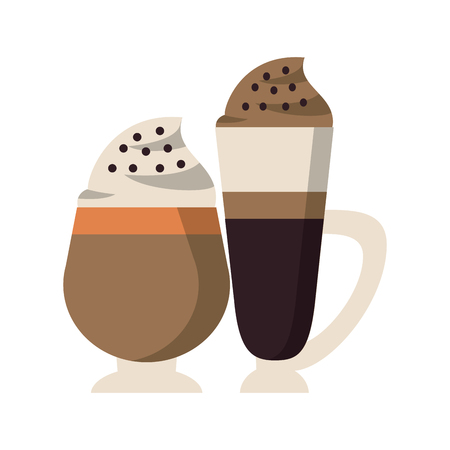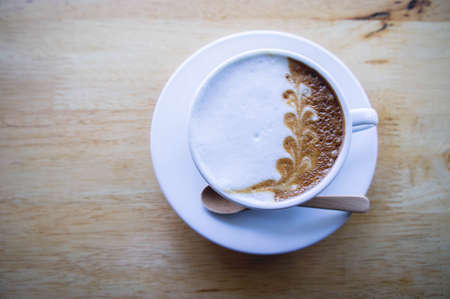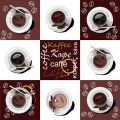Introduction to Coffee Filters in American Coffee Culture
In the United States, coffee is more than just a drink—its a daily ritual that shapes morning routines, fuels workdays, and fosters social connections. One of the key components behind a great cup of drip coffee is often overlooked: the coffee filter. Whether its in a cozy kitchen at home or a bustling neighborhood café, filters play an essential role in how Americans brew and enjoy their coffee.
Drip coffee remains one of the most popular brewing methods across the country, largely due to its convenience and consistency. Central to this method is the filter, which not only holds the coffee grounds but also affects the flavor, clarity, and texture of the final brew. From disposable paper filters to reusable metal ones, each type brings its own unique qualities to the cup.
Coffee filters are found in nearly every American household with a drip machine. At home, many people rely on standard white or brown paper filters for quick and easy cleanup. In cafés, baristas may choose specific filters based on desired flavor profiles or brewing techniques. Heres a quick comparison of common filter types used in American homes and cafés:
| Filter Type | Material | Common Use | Flavor Impact |
|---|---|---|---|
| Paper (White) | Bleached Paper | Home Brewers, Standard Drip Machines | Cleans up oils and fine particles; produces cleaner taste |
| Paper (Brown) | Unbleached Paper | Eco-conscious Home Brewers | Slightly more earthy flavor; still clean profile |
| Metal Mesh | Stainless Steel | Cafés, Manual Brewers (e.g., pour-over) | Allows more oils through; fuller-bodied cup |
| Cloth Filters | Cotton or Hemp | Artisan Cafés, Enthusiasts | Mild filtration; balanced body and clarity |
The choice of coffee filter can influence everything from mouthfeel to aroma. As drip coffee continues to be a staple in American life—whether brewed automatically before work or hand-poured with care—the humble filter plays a big part in shaping those everyday moments of comfort and energy.
2. Types of Coffee Filters and Their Materials
When it comes to brewing drip coffee, the type of filter you use can seriously affect both flavor and sustainability. Let’s take a closer look at the most common types of coffee filters—paper, metal, and cloth—and how their materials influence your cup of joe.
Paper Filters
Paper filters are the go-to choice for many home brewers in the U.S., especially with automatic drip machines. They’re disposable, easy to find, and come in bleached (white) or unbleached (brown) varieties.
Flavor Impact
Paper filters tend to absorb more of the oils from coffee grounds, resulting in a cleaner, brighter cup with less body. If youre looking for a lighter brew with distinct flavor notes, paper is a solid choice.
Sustainability
While convenient, paper filters are single-use. However, unbleached versions are generally more eco-friendly since they skip chemical processing. Some brands even offer compostable options.
Metal Filters
Often made from stainless steel or gold-plated mesh, metal filters are reusable and popular among those who want a richer tasting coffee and less waste.
Flavor Impact
Metal filters allow more oils and fine particles through compared to paper. This gives your coffee a fuller body and bolder flavor—great if you enjoy a strong, robust cup.
Sustainability
Since they’re reusable, metal filters reduce waste over time. Just rinse after each use and occasionally deep clean to keep them performing well.
Cloth Filters
Less common but favored by some pour-over enthusiasts, cloth filters are usually made from cotton or hemp. They sit somewhere between paper and metal in terms of filtration.
Flavor Impact
Cloth filters allow some oils through while still trapping fine grounds. The result is a balanced brew—cleaner than metal-filtered coffee but richer than what you get with paper.
Sustainability
They’re reusable but require more care. Cloth filters need thorough rinsing and regular boiling to prevent buildup and odors. With proper maintenance, they can last for months.
Comparison Table
| Filter Type | Material | Flavor Profile | Sustainability | Maintenance |
|---|---|---|---|---|
| Paper | Bleached/Unbleached Paper | Clean & Bright; Less Body | Single-Use; Compostable Options | No Maintenance (Disposable) |
| Metal | Stainless Steel/Gold Mesh | Full-Bodied; Rich & Bold | Reusable; Low Waste | Rinse & Deep Clean Occasionally |
| Cloth | Cotton/Hemp Fabric | Smooth; Balanced Flavor | Reusable; Eco-Friendly with Care | Rinse After Use; Boil Periodically |
The material you choose ultimately affects not just the taste but also the environmental impact of your daily brew. Whether you go with paper for ease, metal for boldness, or cloth for balance, knowing the differences helps you make smarter choices for both flavor and sustainability.

3. Filter Characteristics That Influence Flavor
When it comes to brewing the perfect cup of drip coffee, the filter you choose plays a bigger role than you might think. Beyond just keeping grounds out of your mug, filters directly affect how your coffee tastes. Let’s break down three key characteristics—porosity, thickness, and weave pattern—that can influence extraction, oil retention, and the final flavor profile.
Porosity: How Much Gets Through
Porosity refers to the size of the pores in the filter material. This determines how quickly water flows through and how many coffee oils and fine particles make it into your cup. A more porous filter allows more oils and micro-grounds to pass through, giving the coffee a fuller body and richer taste. Less porous filters trap more particles, resulting in a cleaner but potentially lighter cup.
Comparison of Porosity Levels
| Porosity Level | Flavor Impact | Body | Clarity |
|---|---|---|---|
| High | Richer, bolder taste | Full-bodied | Lower clarity |
| Medium | Balanced flavor | Moderate body | Moderate clarity |
| Low | Lighter, cleaner taste | Light-bodied | High clarity |
Thickness: Slowing Things Down (or Not)
The thickness of a filter impacts how long water stays in contact with the coffee grounds. Thicker filters slow down the flow rate, which can lead to more extraction—meaning more flavor compounds are pulled from the coffee grounds. However, over-extraction can bring out bitter notes, so balance is key.
Quick Tip:
If youre using darker roasts or brewing smaller batches, a thinner filter might help avoid over-extraction and bitterness.
Weave Pattern: Microscopic But Mighty
The weave of a filter refers to how tightly or loosely its fibers are arranged. A tighter weave traps more fines (tiny coffee particles) and oils, producing a cleaner cup with brighter flavors. A looser weave lets more of those elements through for a deeper mouthfeel and heavier body.
How Weave Affects Your Brew
| Weave Type | Taste Profile | Mouthfeel |
|---|---|---|
| Tight Weave | Crisp, bright flavors | Lighter texture |
| Loose Weave | Smooth, rich flavors | Creamier texture |
The next time youre brewing drip coffee at home, take a moment to consider your filter choice. Small details like porosity, thickness, and weave can make a noticeable difference in every sip.
4. Paper Filters vs Metal Filters: Pros and Cons
When it comes to drip coffee, your choice of filter can make a noticeable difference in flavor, texture, and even the environment. The two most common types of filters are paper and metal. Let’s break down how each one affects your cup of coffee.
Flavor Clarity
Paper filters are known for producing a cleaner, brighter cup of coffee. That’s because they trap most of the oils and fine coffee particles during brewing. This results in a smoother taste with more pronounced flavors, especially if youre using high-quality beans.
On the other hand, metal filters allow more of the coffee’s natural oils and micro-grounds to pass through. This can lead to a fuller-bodied brew with a richer mouthfeel, but sometimes at the cost of clarity and subtle flavor notes.
Coffee Body
The “body” of a coffee refers to how heavy or rich it feels in your mouth. Since metal filters let more oils and tiny grounds into your cup, they typically produce a heavier-bodied coffee. Paper filters remove most of these elements, resulting in a lighter body.
Environmental Footprint
When it comes to sustainability, metal filters have the upper hand. They’re reusable and can last for years if properly maintained. Paper filters are single-use and create more waste over time. However, many brands now offer compostable or unbleached paper filters as an eco-friendlier option.
Comparison Table: Paper vs Metal Filters
| Feature | Paper Filter | Metal Filter |
|---|---|---|
| Flavor Clarity | Clean and bright | Richer but less clear |
| Coffee Body | Lighter | Fuller and heavier |
| Reusable | No (single-use) | Yes (long-lasting) |
| Eco-Friendly | Depends on material (some compostable) | Yes (minimal waste) |
| Taste Preference | Smooth and delicate | Bold and robust |
Choosing What Works for You
If you love a clean-tasting cup with crisp flavor notes, paper filters might be your best bet. But if youre into bold flavors with a rich texture — and you want to cut down on waste — a metal filter could be perfect for your morning routine.
5. Brewing Tips for Better Drip Coffee
If youre aiming to make better drip coffee at home, the type of coffee filter you use plays a big role in how your brew turns out. Paper, metal, and cloth filters each bring out different flavor profiles, so understanding their effects can help you craft a cup thats just right for your taste.
Choosing the Right Filter
Here’s a quick comparison of common filter types and how they affect your coffees flavor:
| Filter Type | Flavor Profile | Pros | Cons |
|---|---|---|---|
| Paper (Bleached/White) | Clean, crisp taste with less oils | No paper taste; disposable; easy to find | Removes oils that add body; creates more waste |
| Paper (Unbleached/Brown) | Slightly earthier flavor | Eco-friendly; widely available | Can give off papery taste if not rinsed before use |
| Metal (Gold or Stainless Steel) | Full-bodied with more oils and fine particles | Reusable; eco-conscious; richer flavor | More cleanup; some sediment in cup |
| Cloth | Smooth and balanced flavor | Sustainable; retains most oils but blocks grit | Difficult to clean; needs frequent replacing over time |
Brewing Techniques That Make a Difference
The filter is only part of the equation. How you brew also matters. Here are some easy tips to get the best out of your drip setup:
- Rinse your paper filter: Wetting the filter before brewing helps remove any papery taste and warms up your brewer.
- Use freshly ground coffee: Grinding right before brewing preserves flavor. Aim for a medium grind—like sea salt—for most drip brewers.
- Keep water temperature between 195°F–205°F: Too hot or too cold water can mess with extraction and flavor balance.
- Brew ratio matters: A good starting point is 1 to 2 tablespoons of ground coffee per 6 ounces of water. Adjust to taste!
- Keep equipment clean: Coffee oils and old grounds build up fast and can ruin the flavor. Clean your carafe, basket, and reusable filters often.
Troubleshooting Common Flavor Issues
| Taste Issue | Possible Cause | Quick Fix |
|---|---|---|
| Bitter or over-extracted flavor | Coffee too fine or water too hot | Try a coarser grind or lower temp water (closer to 195°F) |
| Sour or under-extracted taste | Coffee too coarse or water not hot enough | Use slightly finer grind or hotter water (up to 205°F) |
| Muddy or gritty texture | Poor quality metal filter or wrong grind size | Use a better-quality filter or adjust grind size slightly coarser |
A Few Final Pointers for Consistency
- Stick to one method while experimenting: Change one variable at a time—like filter type, grind size, or brew time—to learn what works best for your taste.
- Weigh your coffee and water: Using a kitchen scale gives you more control than scooping by eye.
- Taste and take notes: Everyones palate is different. Keeping track of what you like helps dial in your perfect cup faster.
The right filter combined with solid brewing habits can turn everyday drip coffee into something truly special—without needing fancy gear or barista-level skills.


